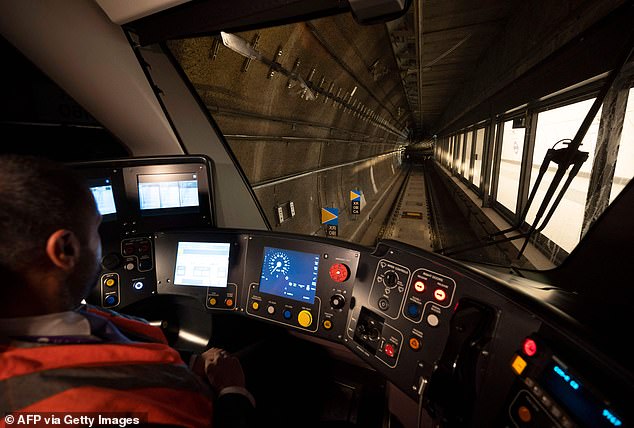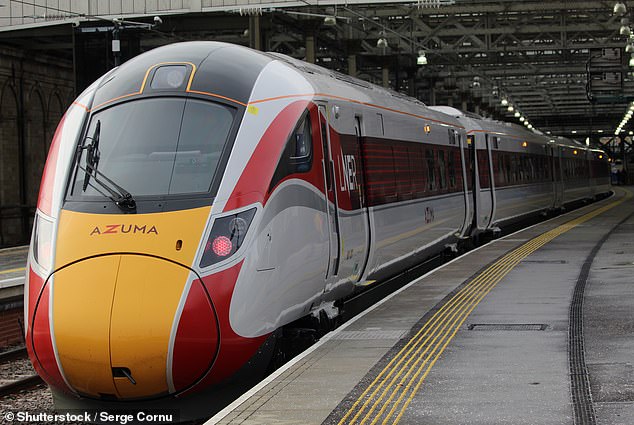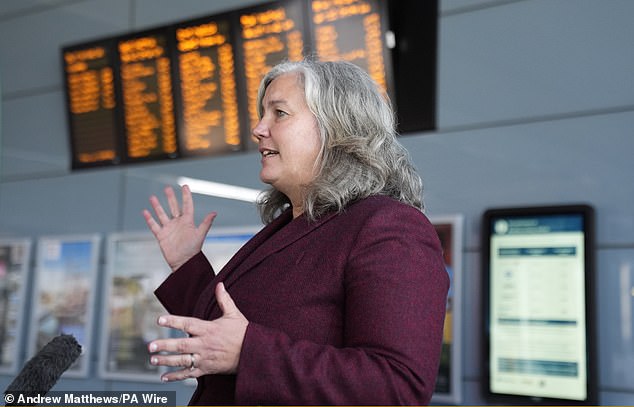Teenagers in Britain will soon be permitted to operate trains due to worries about persistent driver shortages, with the minimum age being reduced to 18 from 20.
Train services often face interruptions since multiple operators depend on drivers choosing to work additional hours to maintain the scheduled operations.
However, the Department for Transport anticipates that lowering the age at which individuals can become qualified train drivers will decrease this dependence on work conducted on days off.
It was stated that 87 percent of cancellations occurring the evening prior to the scheduled service are due to a shortage of drivers. The typical age for a UK train driver is 48 years old.
Approximately 30 percent will hit retirement age by 2029. Less than 9 percent of train operators are women, and below 12 percent come from an ethnic background.
It’s predicted that the number of workers will decrease in the upcoming years because drivers are retiring more quickly than new individuals are joining the field.
According to the BBC’s calculations based on a pay agreement accepted by Aslef last September, the typical income for a train operator in the fiscal period of 2024/25 is expected to be around £69,000.
The initial pay for a driver is set at £24,000 according to information provided by the Government's National Careers Service. Highly seasoned drivers may see their earnings rise up to approximately £87,000.


Typically, applicants are required to possess GCSEs at grades 9 to 4 (A* to C) in both English and mathematics, or comparable certifications.
Staff members must successfully pass several evaluations, health examinations, and interviews before being admitted into a training program. This educational course typically spans from one to two years.
The Department for Transport (DfT) stated that a consultation regarding reducing the minimum driving age, which was conducted last year under the conservative administration, garnered 'substantial backing from various sectors of the industry.'
Transport Secretary Heidi Alexander stated: "We're implementing decisive measures to enhance railway operations and create numerous employment opportunities."
We are dedicated to reviving the economy, with one key focus being the integration of young individuals into the workforce. This initiative aims to guide them towards acquiring skills and engaging in rewarding careers, thereby enhancing economic progress nationwide and supporting our Strategy for Transformation.
'By safeguarding our railways from hold-ups and disruptions due to a lack of personnel, we aim to offer dependable, customer-centric rail trips through Great British Railways (GBR), securing smooth travel experiences for many years ahead.'
The government intends to set up GBR as a fresh entity within the public sector. This organization will be responsible for managing railway infrastructure and overseeing train operations.
Mick Whelan, the general secretary of the train drivers' union Aslef, stated: "Currently, when young individuals finish high school or college at 18 with aspirations to be train drivers, they often take up other employment instead. Consequently, our sector loses out because these potential candidates do not stay idle until their 20th birthday before choosing this profession."
He mentioned that the updated policy aims to 'boost diversity within the driver’s cabin,' along with motivating greater numbers of younger individuals to embrace this role.
According to the DfT, countries such as France, Germany, the Netherlands, and Switzerland have also reduced the minimum age for train drivers.
In 2007, Transport for London expanded its train driver apprenticeship program on the Underground to include 18-year-olds.
Becoming qualified as a driver for mainline trains typically requires from one to two years of training.
The DfT stated that multiple procedures must be completed prior to reducing the minimum age limit.
This involves the sector crafting strategies to onboard younger staff members, along with revising current legislation.
The criteria for assessment and qualifications will remain the same.


TheRailSafetyandStandardsBoard, anindustrybody, statedthatitsresearch'concludedthateighteenyearoldscanoperateasafelyastraindrivers'.
The Department of Transport (DfT) thinks that new employment and apprentice positions for individuals aged 18 might be accessible as soon as December.
The Education Secretary, Bridget Phillipson, stated: "Through expanding access to this crucial industry for more young individuals, we're not just paving the way for advanced career opportunities but also tackling the skill gaps that impede our transportation system and economic progress."
'Another stride towards our objective of dismantling obstacles and generating fresh prospects for the youth has been made here.'
Daniel Mann, who leads industry operations at the Rail Delivery Group, commented, "For two centuries, our railways have been crucial in linking communities and fostering economic development, with train drivers being an essential component of this success."
Being a train operator offers a fantastic career path for the long haul, and our aim is to unlock these opportunities, particularly for those fresh out of school. We're keen on attracting a broader spectrum of younger applicants from various backgrounds to mirror the neighborhoods we cater to.
These modifications will not just assist us in attracting the upcoming cohort of drivers, thus reducing the typical employee age, but they will also contribute to maintaining a robust railway system for future decades.
Read more